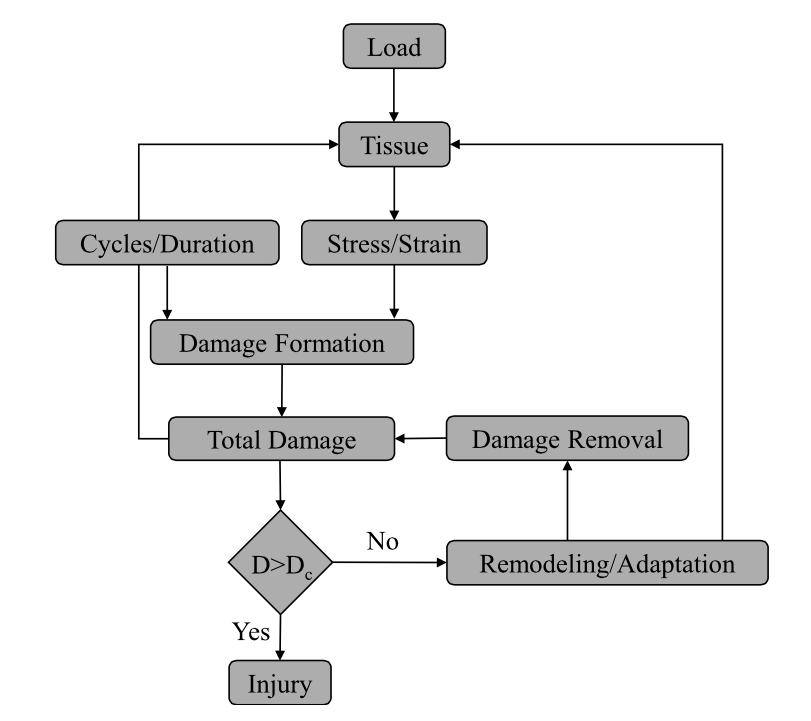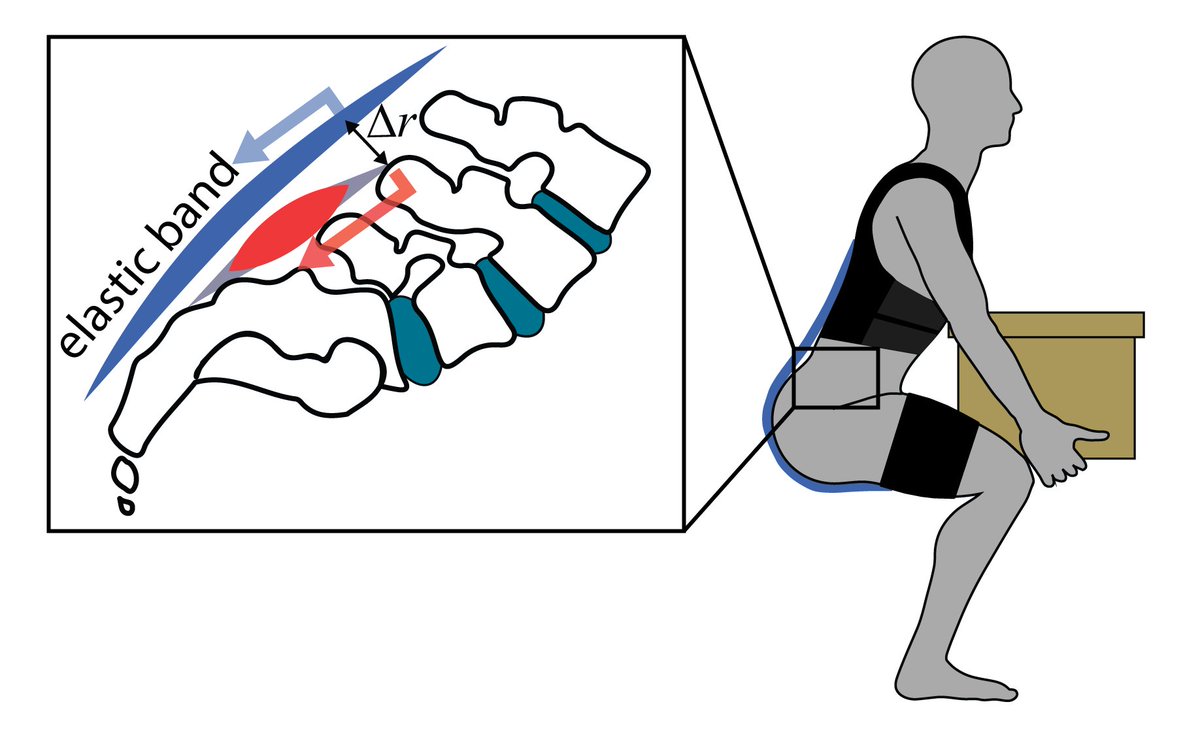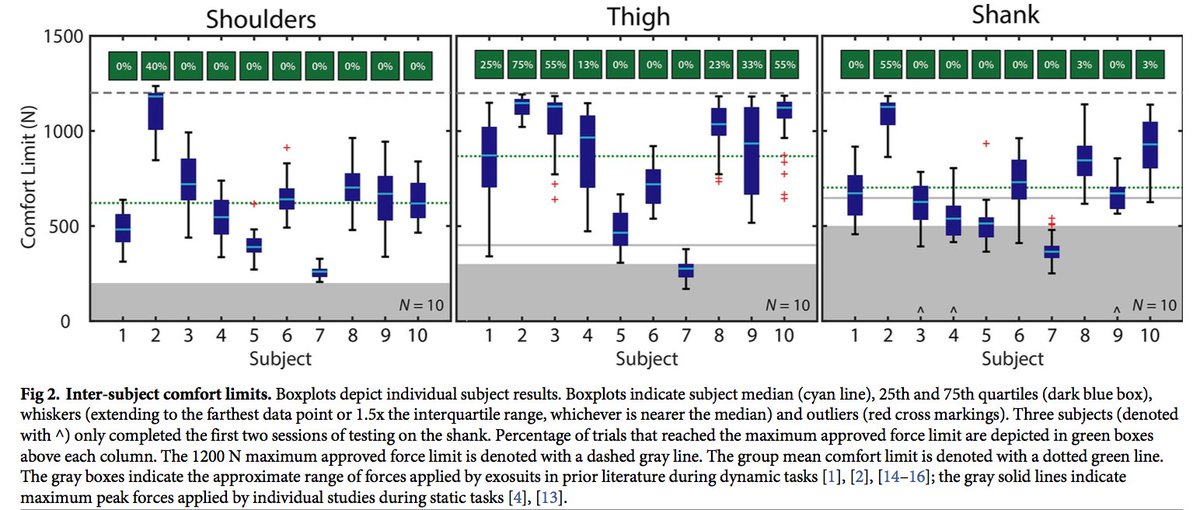
Occupational #wearables for monitoring low back load have potential to improve ergonomic assessments & enable personalized, continuous monitoring of overexertion injury risk in the workplace.
#biomechanics #ergonomics
Encouraged by what we discovered:
mdpi.com/1424-8220/21/2…
1/
#biomechanics #ergonomics
Encouraged by what we discovered:
mdpi.com/1424-8220/21/2…
1/
We wanted to know: if we can only use a small number of wearable sensors to monitor low back loading, then which sensors should we use, where should we place them, what type of algorithm should we employ, & how accurately can we monitor back loading during material handling?
2/
2/

To address this we synchronously collected data from the #biomechanics lab & from #wearables to analyze 10 individuals each performing 400 different material handling tasks. We explored dozens of candidate solutions that used IMUs on various body locations & pressure insoles.
3/
3/
We found that the two key sensors for accurately monitoring low back loading are a trunk IMU & pressure insoles. Together with a Gradient Boosted Decision Tree algorithm they have potential to provide a practical, accurate & automated way to monitor back loading & injury risk.
4/
4/

We also found that the key to realizing accurate lumbar load estimates with this wearable approach in the real world will likely be optimizing force estimates from pressure insoles.
5/
5/
This was one of the largest data collections we’ve undertaken, using lab & wearable sensors to study ~400 tasks per participant. It was a lot of fun to dive deeper into the #biomechanics of ergonomics. Big kudos to lead author @EmilyMatijevich and our ML collaborator Peter.
6/
6/
We’re really excited about the potential for #wearables to improve the quality, quantity & efficiency of #ergonomic assessments in industry, & to help usher in a new era of preventative occupational safety & health that transforms how musculoskeletal risk is managed & insured.
7/
7/
It's worth highlighting that there are strong similarities between injury risk management in the workplace & in sports. These fields stand to learn a lot from each other.
#biomechanics #ergonomics
8/
#biomechanics #ergonomics
8/
Overuse/overexertion injuries are prevalent in both industry & sport. Portable, practical, automated & accurate tools that enable musculoskeletal load & injury risk monitoring have the potential to be game-changing in both these domains -- for science & societal wellbeing.
9/
9/
Thus it was cool to see another new paper come out this week on the science (causal pathways) underlying sport overuse injuries. Kudos to @KalkhovenJudd @edwardswb @francoimpell on this insightful & timely paper on #musculoskeletal #biomechanics
link.springer.com/article/10.100…
10/
link.springer.com/article/10.100…
10/
In conclusion: watch out overuse/overexertion injuries!
It's 2021 & you’re being put on notice: the arsenal of #ergonomics & #biomechanics & the future of #wearables is coming together to break you down & put you in check 😬
mdpi.com/1424-8220/21/2…
11/11
It's 2021 & you’re being put on notice: the arsenal of #ergonomics & #biomechanics & the future of #wearables is coming together to break you down & put you in check 😬
mdpi.com/1424-8220/21/2…
11/11
@threadreaderapp unroll
• • •
Missing some Tweet in this thread? You can try to
force a refresh








